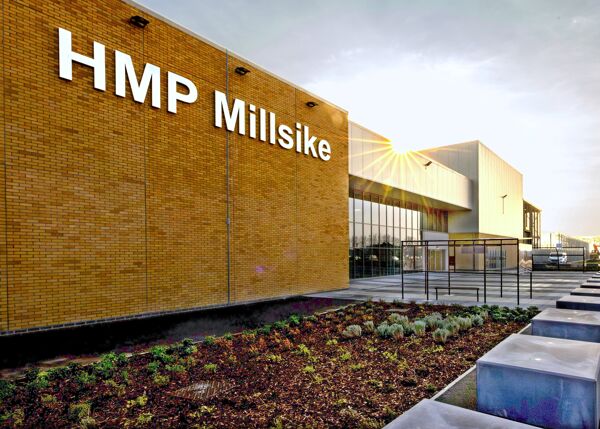
NEC has been used to procure key infrastructure for the Kai Tak Development, which spans a total planning area of about 320 ha at the former Kai Tak airport site in Hong Kong. In May 2019 the Civil Engineering and Development Department (CEDD) of the Government of the Hong Kong Special Administrative Region let a design and construction contract with the NEC3 Engineering and Construction Contract (ECC) Option A (priced contract with activity schedule) for the Kai Tak Development stage 4 infrastructure.
CEDD is an experienced user of NEC but this was the first time it had chosen ECC Option A for design and build. The HK$1,480 million (£148 million) contract with Penta-Ocean Construction Company Limited (POC) involved the design and construction of a 1.1 km dual two-lane distributor called Road D3 (Metro Park Section), with 250 m at grade, 360 m elevated over the new Central Kowloon Route and 520 m in a cutting through the future Metro Park. The latter is partially covered by a 200 m long elevated landscaped deck. The works also included a saltwater pumping station and sewage pumping station for future residential development, 3.9 ha of landscaped open space and a waterfront promenade.
The road section was completed on schedule in December 2022 and the remaining works are being completed in phases by 2024. CEDD was the NEC project manager, Aecom Asia Company Limited was the supervisor and the contractor engaged Mannings (Asia) Consultants, AD+RG and LWK+Partners as its designers.
Design excellence
CEDD’s chief engineer George Mak says Road D3 (Metro Park Section) is the only direct main road link between the former runway, now home to the Kai Tak Cruise Terminal, and the former north apron. ‘It plays a key role in enhancing the road network in the Kai Tak development. As such, to enhance accessibility and provide the necessary high quality infrastructure for supporting developments, the stage 4 project was under a very tight schedule.’
He says the project’s prominent location alongside the future waterfront Metro Park meant there was strong public aspiration, particularly from the Harbourfront Commission, for aesthetic quality of the design. ‘To tap different and innovative design ideas from the market, allow sufficient design flexibility in the contract, promote collaboration and strive for excellence in design, CEDD adopted ECC Option A for both design and build.’
 Mak says another key challenge was to maximise and diversify the future development potential in the design of the public open space to meet all stakeholders’ acceptance and solicit recognition and support in various public consultations. ‘The NEC requirement on the parties to act in a “spirit of mutual trust and co-operation” was embraced fully in the design stage, resulting in an outstanding design for the public open space. It won the Hong Kong Institute of Urban Design’s Special Citation in the 2021 Urban Design Awards Plan and Concept (Local Projects) category.’
Mak says another key challenge was to maximise and diversify the future development potential in the design of the public open space to meet all stakeholders’ acceptance and solicit recognition and support in various public consultations. ‘The NEC requirement on the parties to act in a “spirit of mutual trust and co-operation” was embraced fully in the design stage, resulting in an outstanding design for the public open space. It won the Hong Kong Institute of Urban Design’s Special Citation in the 2021 Urban Design Awards Plan and Concept (Local Projects) category.’
Using NEC’s administrative tools
He says CEDD, Aecom and POC working as a project team established procedures with NEC’s various administrative tools from the outset of the contract. ‘These included standard forms of communication and an early warning register. The parties encouraged sharing of data to expedite the design and foster effective coordination with the many interfacing projects.
Furthermore, Mak says weekly programming meetings were held. ‘These resulted in the first programme being accepted in just two and a half months from the start of the contract. Each revised programme was also collaboratively discussed before formal submission and rapid acceptance.’
Following the onset of the Covid-19 pandemic in January 2020, the project team held numerous meetings to implement delay recovery measures. Negotiation on the quotation for acceleration under ECC clause 36 was settled quickly as a result of the NEC-inspired collaboration.
He says NEC risk and change management processes were put to good use on the contract. ‘Over 30 early warnings were issued in relation to the road opening and the parties jointly managed those risks successfully through strong collaboration. The road was opened to the public on time in December 2022 as a result of the joint efforts of all parties.’
Dealing with multiple interfaces
Mak says one of the biggest challenges on the contract was to centralise and implement effective coordination among other various multi-billion-dollar interfacing infrastructure projects in and around the Kai Tak development. ‘These included the Kai Tak Sports Park, a district cooling system and the Central Kowloon Route. The NEC early warning process proved particularly useful in dealing with interface risks.’
He cites for example an NEC early warning that was issued in relation to risk on the works adjacent to an interfacing project involving a deep excavation. ‘At the risk reduction meeting, the parties collaborated and focused on solutions instead of liabilities. The result was that we successfully reduced the risks of project delay and budget overrun.’
Project highlight video
Benefits of using NEC
- Using ECC Option A for design and build enabled the client to tap innovative design ideas, allow design flexibility, promote collaboration and achieve design excellence.
- NEC requirement on the parties to act in a ‘spirit of mutual trust and co-operation’ was embraced at the outset, ensuring full collaboration throughout the design and construction process.
- NEC contract processes helped accelerate recovery from Covid-19 impacts and manage emerging construction and interface risks through early warnings, keeping the project on programme and within budget.




